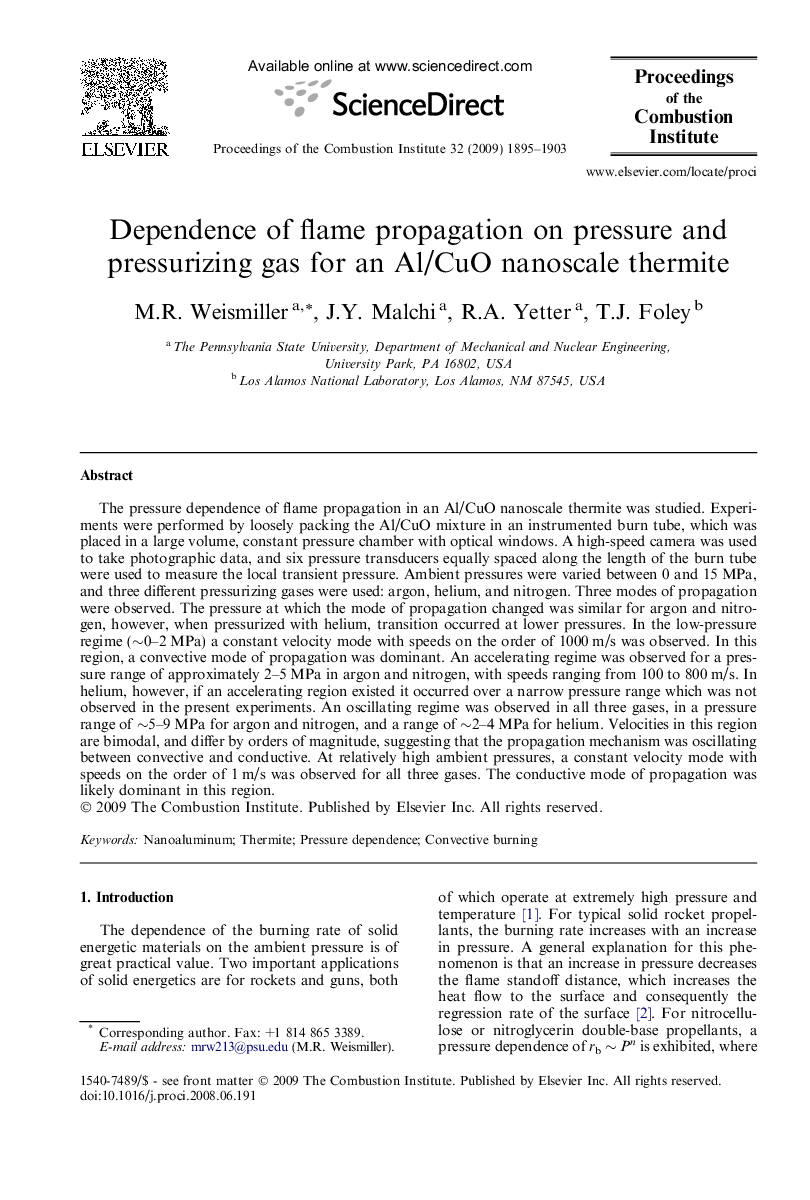| کد مقاله | کد نشریه | سال انتشار | مقاله انگلیسی | نسخه تمام متن |
|---|---|---|---|---|
| 241039 | 1427926 | 2009 | 9 صفحه PDF | دانلود رایگان |

The pressure dependence of flame propagation in an Al/CuO nanoscale thermite was studied. Experiments were performed by loosely packing the Al/CuO mixture in an instrumented burn tube, which was placed in a large volume, constant pressure chamber with optical windows. A high-speed camera was used to take photographic data, and six pressure transducers equally spaced along the length of the burn tube were used to measure the local transient pressure. Ambient pressures were varied between 0 and 15 MPa, and three different pressurizing gases were used: argon, helium, and nitrogen. Three modes of propagation were observed. The pressure at which the mode of propagation changed was similar for argon and nitrogen, however, when pressurized with helium, transition occurred at lower pressures. In the low-pressure regime (∼0–2 MPa) a constant velocity mode with speeds on the order of 1000 m/s was observed. In this region, a convective mode of propagation was dominant. An accelerating regime was observed for a pressure range of approximately 2–5 MPa in argon and nitrogen, with speeds ranging from 100 to 800 m/s. In helium, however, if an accelerating region existed it occurred over a narrow pressure range which was not observed in the present experiments. An oscillating regime was observed in all three gases, in a pressure range of ∼5–9 MPa for argon and nitrogen, and a range of ∼2–4 MPa for helium. Velocities in this region are bimodal, and differ by orders of magnitude, suggesting that the propagation mechanism was oscillating between convective and conductive. At relatively high ambient pressures, a constant velocity mode with speeds on the order of 1 m/s was observed for all three gases. The conductive mode of propagation was likely dominant in this region.
Journal: Proceedings of the Combustion Institute - Volume 32, Issue 2, 2009, Pages 1895–1903